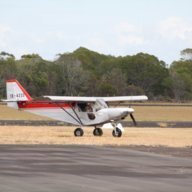G'day Dan, from the look of it, the module you have is a very early one, the module Mark is experimenting with probably wont work with your pickups and coils. I replaced my old modules recently, it involved replacing the whole ignition, pickups, coils and modules.
Unfortunately the later model second hand modules I got for replacements only lasted a matter of months before they required warming up before the engine would fire.
I still have the old modules, I replaced them because I thought that the insulation on the wires had become too hard. There is fair bit work involved in setting up a whole new ignition system.


